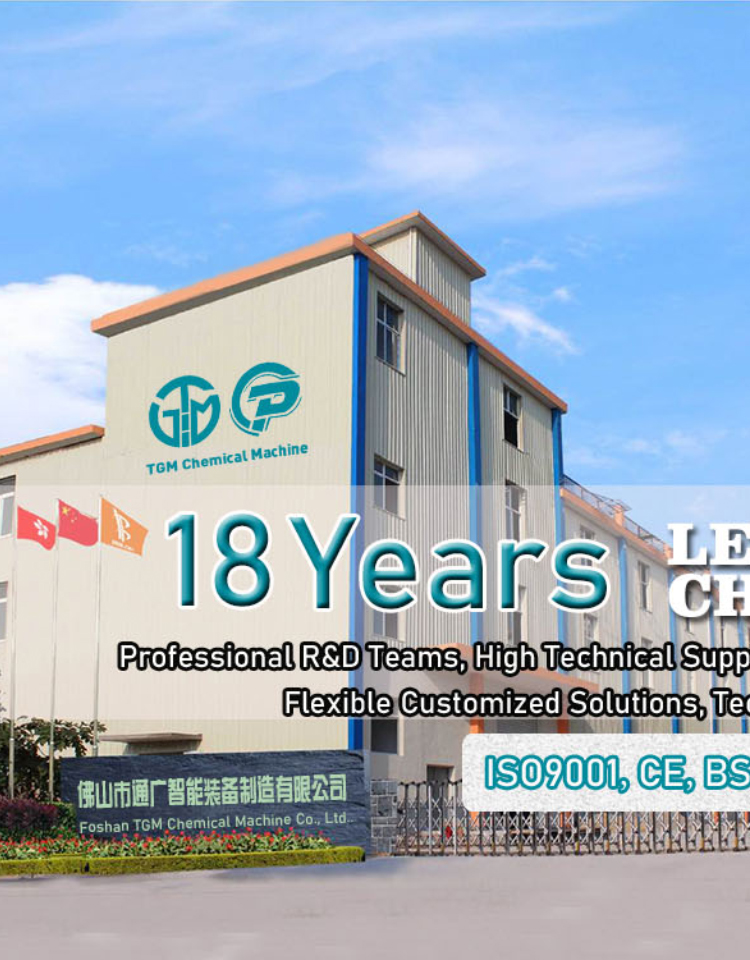Email cannot be empty
Password cannot be empty
Email format error
Email cannot be empty
Email already exists
6-20 characters(letters plus numbers only)
The password is inconsistent
Email format error
Email cannot be empty
Email does not exist
6-20 characters(letters plus numbers only)
The password is inconsistent


Bead Mill Machines: The Unseen Engine Behind Super-Smooth Products
From the vibrant, long-lasting ink in your printer and the consistent color of your car's paint, to the life-saving drugs in suspension and the creamy texture of your favorite lipstick, there's a hidden technology at work. This technology is responsible for grinding and dispersing particles down to the micro and even nano scale. Meet the unsung hero of modern manufacturing: the Bead Mill Machine.
Often called a pearl mill or a sand mill, this powerhouse is fundamental in creating the high-quality, stable products we rely on every day.
So, What Exactly is a Bead Mill?
In simple terms, a bead mill is a precision grinding machine designed to reduce particles to an extremely fine size and distribute them evenly within a liquid (the process known as "dispersion").
Imagine a high-speed, heavily engineered "mixer." Instead of blades, it uses a chamber filled with millions of tiny, hard grinding beads. The material to be processed—a coarse pigment, a dry powder, or an agglomerate—is pumped into this chamber. A rapidly rotating agitator then sets the beads in intense motion.
Through a powerful combination of collision, shear, and impact forces between these agitated beads, the solid particles are progressively broken down. The result? A perfectly homogeneous, ultra-fine slurry or suspension.
How Does It Work? The Step-by-Step Process
-
Loading & Pumping: The pre-mixed slurry (containing coarse particles and liquid) is fed into the milling chamber by a pump.
-
Agitation & Grinding: Inside the sealed chamber, an agitator shaft—fitted with discs or pins—spins at high speed. This energizes the dense bed of grinding beads, creating a tremendous amount of kinetic energy.
-
Separation: This is a critical step. The finely ground product must exit the chamber, but the grinding beads must be retained. A sophisticated separation system, typically a narrow-gap slot or a screen, is located at the outlet. It allows the processed slurry to pass through while blocking the beads.
-
Cooling: All that energy creates heat. To prevent damaging heat-sensitive materials and ensure process stability, the milling chamber is usually surrounded by a jacket through which cooling water circulates.
Key Advantages: Why Choose a Bead Mill?
Bead mills outperform older grinding technologies like ball mills or three-roll mills in several key areas:
-
High Efficiency & Energy Density: The direct transfer of energy from beads to particles makes them incredibly efficient, reducing processing time.
-
Superior Fineness: Capable of achieving particle sizes well below 1 micron (nanometer scale), which is unattainable for many other methods.
-
Continuous Operation: Most industrial bead mills are designed for continuous, high-volume production, unlike batch-processing methods.
-
Versatility: They can handle a wide range of materials, from low to high viscosity, and are suitable for both abrasive and delicate products.
-
Scalability: Processes developed in a small lab-scale bead mill can be reliably scaled up to large production machines.
Where Are Bead Mills Used? (Applications Galore!)
You'll find bead mills hard at work in a diverse range of industries:
-
Paints & Coatings: Creating the fine pigments that give paint its color, opacity, and durability.
-
Inks: Grinding pigments for printing inks, ensuring vibrant colors and smooth flow.
-
Agrochemicals: Producing stable suspensions for pesticides and herbicides.
-
Pharmaceuticals: Reducing the particle size of active ingredients to enhance bioavailability in drugs.
-
Electronics: Preparing conductive pastes and ceramic slurries for batteries and electronic components.
-
Cosmetics: Formulating foundations, lipsticks, and sunscreens with a flawless, smooth texture.
Choosing the Right Bead Mill
Not all bead mills are the same. Selecting the right one depends on your specific needs:
-
Grinding Media (Beads): The size, material (e.g., zirconia, glass, ceramic), and density of the beads are chosen based on the target particle size and the hardness of the material.
-
Agitator Design: Disc, pin, or annular gap designs offer different shear and energy inputs.
-
Chamber Geometry: Affects the flow pattern and residence time of the material.
-
Horizontal vs. Vertical: Horizontal bead mills are more common for continuous production and easier maintenance.
Conclusion
The bead mill is a masterpiece of engineering that operates at the intersection of physics and chemistry. It is a critical enabling technology for innovation across countless sectors, allowing us to manipulate matter at an incredibly small scale. The next time you admire a brilliantly colored object or use a product with an exceptionally smooth feel, remember the powerful, unseen "beads" that made it possible.

